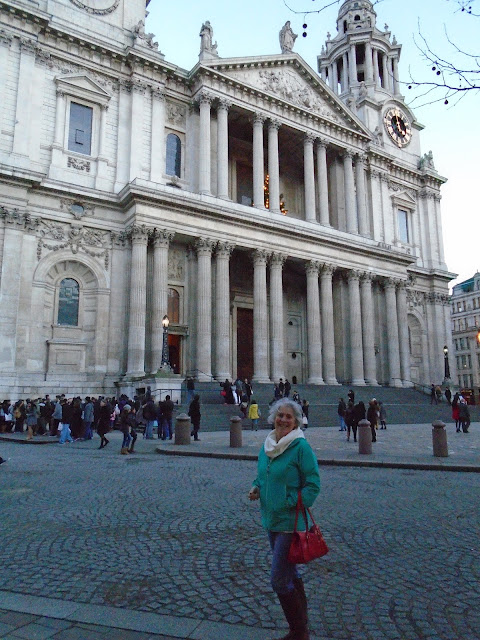 |
| Christmas Decorations off Regent Street |
There‘s no better place for
the holidays than with family. But some years don’t work out like that and this was
one of those years. Things change. Children grow. They move. We move. Duty
calls.
A few years ago I was that woman who had 6 fully decorated Christmas trees in her home. I would have baked at least 35 dozen cookies along with cakes, breads and huge pans of Chex Mix. Gifts would be piled three-deep with any assortment of bags, tags and baubles.
This year? I put holiday covers on a few pillows and called it a day. No tree and no lights, no wrapping paper, ribbons or bows. I baked a scant three dozen cookies and Chex Mix was done in half-batches because my oven’s so small.
 |
| Behold! My complete 2015 holiday decorating: four new pillow covers |
Clearly, this would not play out as
a traditional Christmas. So if it was going to be different, why not go whole hog?
I booked a room in central London where we stayed four days and let the good
folks at Crowne Plaza do the decorating for me. They had a blaze going in the
lobby fireplace, a beautiful tree, and lovely holiday trim throughout. Ta-da.
Christmas Eve: In the morning we walked to Smithfield Market to watch Hart Butcher’s annual auction. Despite the drizzle, there was a crush of people waving 20-pound notes for a chance to buy beef tenderloin or pork roast for Christmas dinner. We didn’t linger long enough to see if there was a goose up for bid. (But I like to think there was.)
Later in the day we strolled
along Fleet Street, home to England’s many journalists, then over to St. Paul’s
Cathedral and the London Exchange, where Ebenezer Scrooge often conducted business.
 |
| The London Exchange |
Christmas Day: After breakfast
we planned a long, quiet walk along the Thames then across Tower Bridge. I
expected there to be only a few of us out, yet what to my wondering eyes should
appear but others just like us who do this each year! I didn’t know until now,
but there are hundreds – possibly thousands – of families who don’t celebrate a
traditional Christmas, who go somewhere or do something different.
 |
| On Tower Bridge in my Christmas cap |
 |
| In the London Bridge City Christmas Market, shuttered up in honor of the day |
Boxing Day: The day after Christmas, so named because traditionally this was the day servants and tradesmen would receive gifts called a 'Christmas Box' from their masters. But for us? More walking around the city during the day then to Kew Gardens in the evening for a mile-long Christmas trail of decorations.
 |
| This handsome fellow was outside Covent Gardens |
 |
| Make-no-mistake Mistletoe inside Covent Gardens |
For me, unexpectedly, Christmas was delightful. Since I wasn’t spending the holidays with all my sweet little sugarplums back home, I’m glad I did something out of the ordinary, something to keep my mind off what I might be missing. With apologies to Stephen Stills, if you can’t be in the place you love, love the place you’re in.
But I’d still like a full batch of Chex Mix.
For more pictures of our London Christmas, click here, please.
_____________________________
A Lesson on Being Cheap - From a plaque on the Thames River.
"Legend suggests that before the construction of London Bridge in the 10th century a ferry existed here. Ferrying passengers across the River Thames was a lucrative trade. John Overs who, with his watermen and apprentices, kept the 'traverse ferrie over the Thames', made such a good living that he was able to acquire a considerable estate on the south bank of the river.Did this old legend have any influence on Charles Dickens when he described people celebrating Scrooge's death? Perhaps.
John Overs, a notorious miser, devised a plan to save money. He would feign death believing that his family and servants would fast out of respect and thereby save a day's provisions. However, when he carried out the plan, the servants were so overjoyed at his death that they began to feast and make merry. In a rage the old man leapt out of bed to the horror of his servants, one of whom picked up a broken oar and 'thinking to kill the Devil at the first blow, actually struck out his brains.'
The ferryman's distressed daughter Mary sent for her lover, who in haste to claim the inheritance fell from his horse and broke his neck. Mary was so overcome by these misfortunes that she devoted her inheritance to founding a convent into which she retreated."










